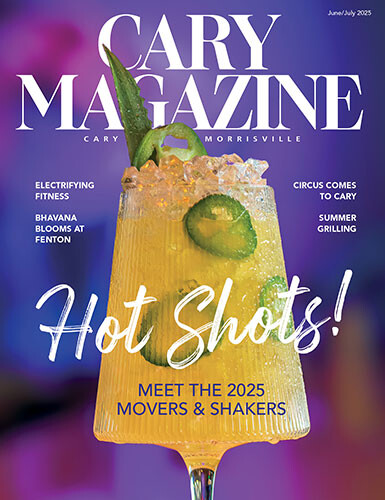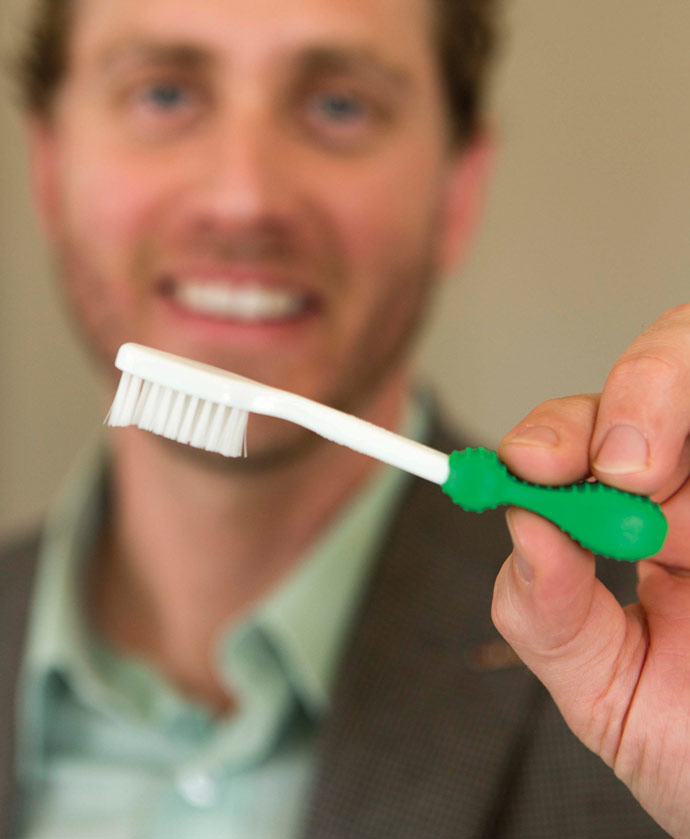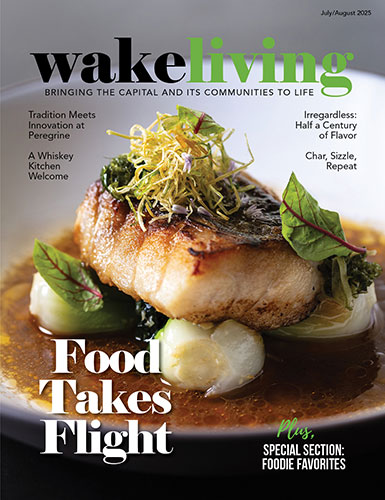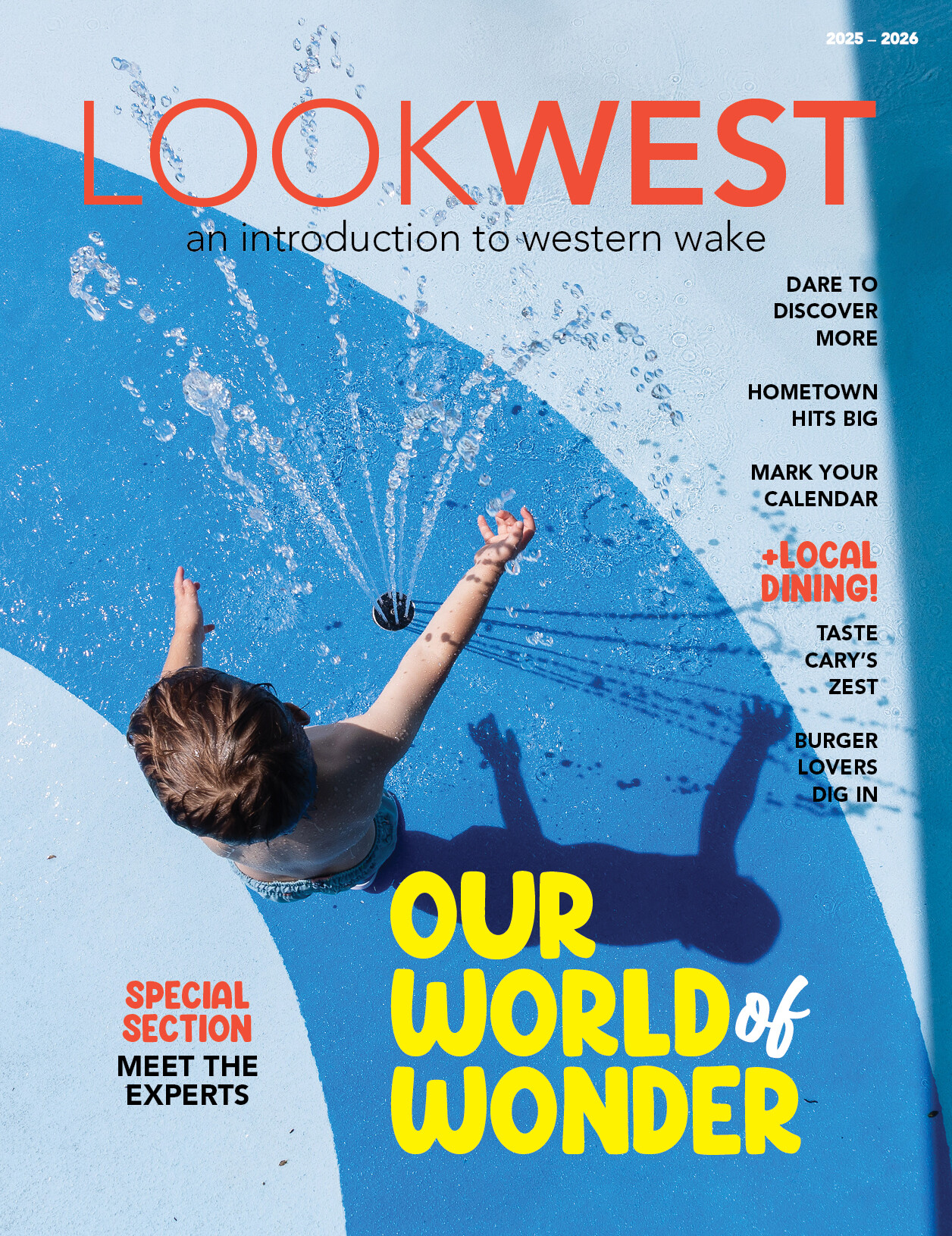Necessity is the mother of invention, so the Greek philosopher Plato reportedly said. But in this modern world, just what does it take to be an inventor?
“I had my a-ha moment in Afghanistan,” said Steven Walther of Cary. A Green Beret and Special Forces medic, he was tasked with teaching Afghan villagers how to brush their teeth.
Many were using a toothbrush for the first time.
“They used it like a crowbar,” said Walther, 36, now an operations manager for a pharmaceutical firm. “I wanted to say, through the interpreter, ‘Be gentle!’ Aggressive brushing can cause gum wear, and enamel wear.”
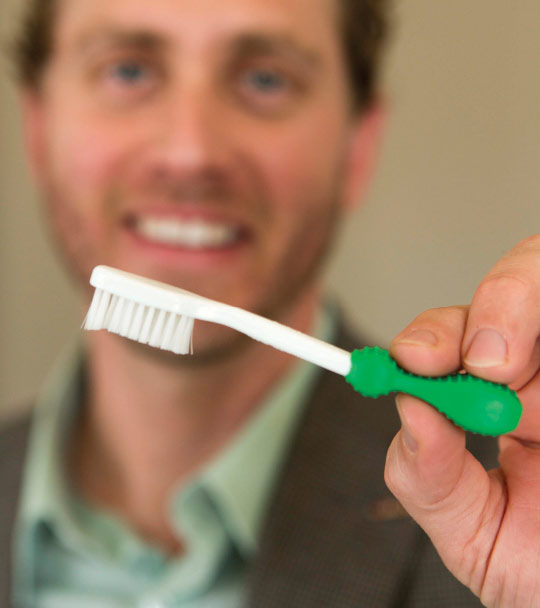
Steven Walther of Cary developed the Toofinger Brush to encourage gentle brushing of the teeth. Because it has a smaller, wider handle, used in a pinch grip, the brush generates just 25 percent of the force of a full-handed grip.
Because the myth that brushing harder equals brushing better exists here at home too, Walther invented the Toofinger Brush. He says its smaller, wider handle, used in a pinch grip, generates just 25 percent of the force of a full-handed grip.
“The concept is pretty simple. After all, if you want to pluck your eyebrows you use a tweezer, not pliers,” Walther said. “Modifying the tool changes everything.”
Garage inventors
Local patent attorney Jim Passe, of Passé Intellectual Property LLC, says some people invent as part of their jobs in the worlds of biotech, medicine and technology, often within professional research settings.
Others are what he calls “garage inventors,” devising updates on items like barbecue grills or humidifiers. Some license their idea to a company for production, while others see their product through to market, to maintain control.
“My favorite part of this job is being the second or third person to hear about an idea,” Passe said. “But most of my clients say, ‘This is my second invention. I didn’t do anything with my first idea, and now I see it all over the market.’”
That’s true for Walther; he didn’t get far with his first invention, a hanger with telescopic arms to prevent dimples in shirt shoulders.
This time, hands-on is important. After studying the science behind the brushing motion, he made early handle prototypes with a wooden dowel and a Dremel tool, then glued them to existing brush heads. Later versions were created by a 3-D printer at Cary company Touchstone 3D.
“You’ve invented something when you’ve solved a problem,” said Passe, who also leads Meetup group the RTP Inventors Guild. “But upping from inventor to product is a different story; not all inventions are sufficient to become a business.
“A patent only means you have the right to have no competitors,” he explained. “Only 70 percent of patent applications make it through, (the rate drops significantly for biotech) and it’s a very slow-moving process.”
That expensive process begins with a patentability search and the filing of a written application that’s a combination of a legal and scientific paper, Passe says, to obtain patent pending status, followed by input from examiners.
“It’s an average of four years from file date to patent,” he said. “But patent protection starts at the file date, and you can license the product while you’re waiting.”
Latest development
Walther obtained a provisional patent for the Toofinger Brush, and set up a booth at the North Carolina Dental Society convention to test his wares.
“The response was overwhelmingly positive,” he said. “One older dentist (who was skeptical at first) put his hand on my shoulder and said, ‘Son, you’ve just reinvented the mousetrap!’
“Then I started calling manufacturers.”
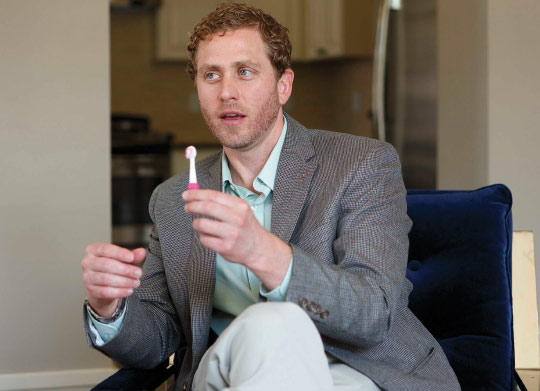
Parallel to his inventor’s journey, Walther earned a master of business administration degree that’s helping him with the commercialization of his product.
“This is a very mature market,” he said. “I’ve spent the past year and a half working on understanding it, on long-term thinking and business planning. The question is, how do I penetrate this very established market with very limited resources, and find opportunities to stand out and gain market traction?
“Until everyone is familiar with it, the onus to communicate the Toofinger message is on me, the entrepreneur.”
What about appearing on a national TV show like Shark Tank?
“That would be a game changer, an opportunity to communicate the value of the product to a lot of people,” Walther said. “But meanwhile, I’ll keep working.”
Currently, the $3.99 Toofinger Brush is available at specific dental offices in our area, or online at toofingerbrush.com. You can even get an online subscription, meaning Walther will mail you a new toothbrush every 90 days, a changeover recommended by dentists.
And for each brush purchased, another is donated to North Carolina Missions of Mercy, an outreach program of the North Carolina Dental Society.
Walther’s latest development, coming soon to market, is a Toofinger brush with a child-sized bristle head and a tongue scraper. It’s sized so that kids can use it themselves, or parents can brush for them.
“The inventor mindset involves two things,” Walther said. “Curiosity — I’m always asking, ‘Is this the best it can be?’ and perseverance, to keep going to find a solution.”
- Make Mine à la Mode
- Meet Fanny Slater
- Tomato Troubles
- The A-Ha Moment: What’s Your Idea?
- Summer Dreams
- Bowled Over by Cricket
- Quality Time: Fill Your Bucket List Foundation
- Movers & Shakers
- Magic Man
